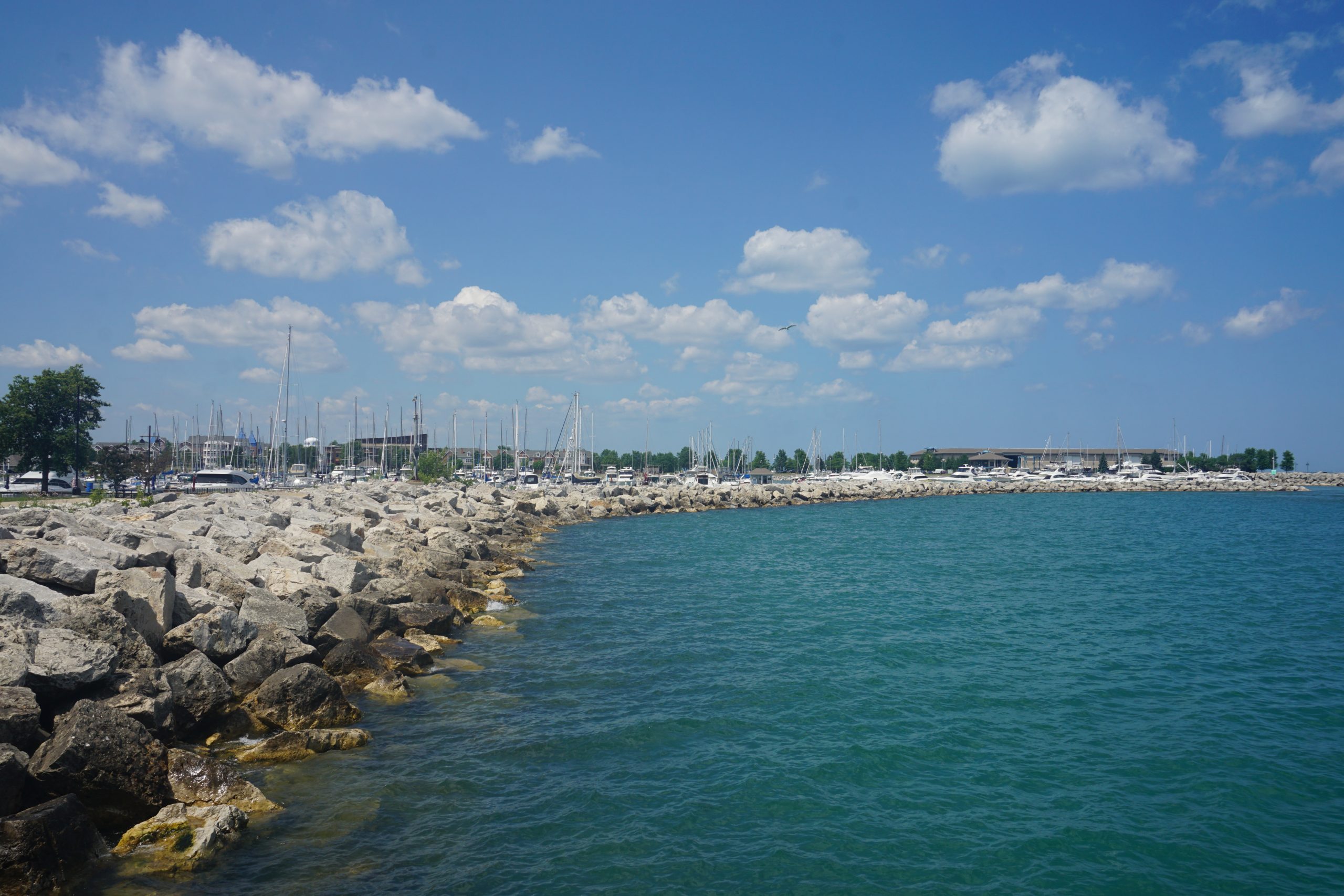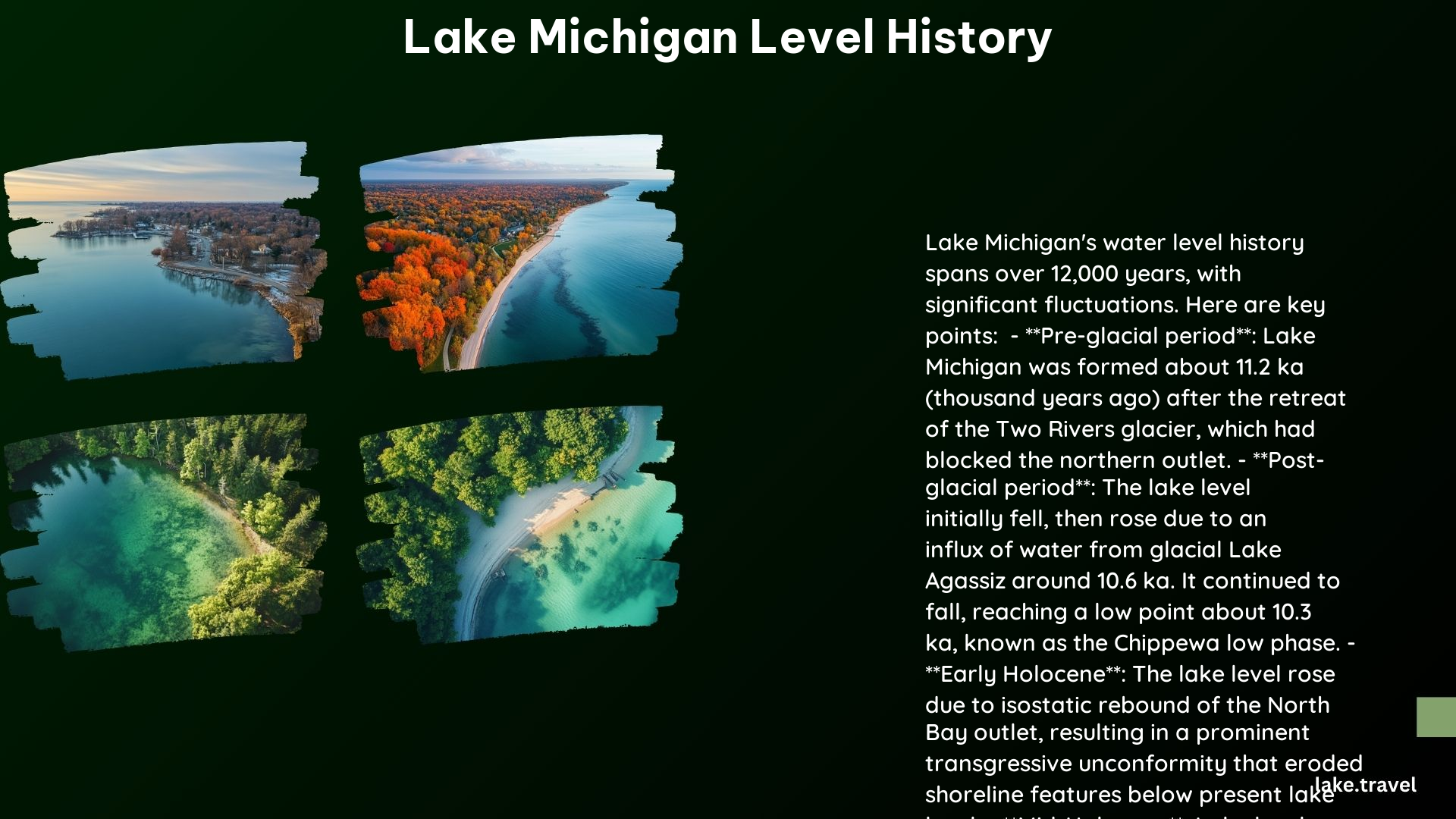Lake Michigan’s water levels have fluctuated significantly over the past 12,000 years, influenced by various geological and climatic factors. From its formation during the last ice age to the recent high water levels, the history of this Great Lake is a captivating story of natural forces shaping the landscape.
Formation and Early History (1.2 Billion Years Ago – 11,200 Years Ago)

- Lake Michigan began forming about 1.2 billion years ago as a result of tectonic plate movements and glacial erosion.
- During the last ice age, the lake was part of a larger glacial lake system, including Lake Agassiz, which covered a vast area of North America.
Post-Glacial History (11,200 Years Ago – Present)

- After the ice age, the lake’s water level dropped significantly due to the retreat of the Two Rivers glacier, which had blocked the northern outlet of the lake.
- Around 10,600 years ago, an influx of water from Lake Agassiz temporarily raised the lake level, depositing the distinctive gray Wilmette Bed of the Lake Michigan Formation.
- The lake level continued to fall, culminating in the opening of the North Bay outlet about 10,300 years ago, resulting in the Chippewa low phase, where the lake level was about 80 meters lower than today.
- The early Holocene lake level rise was controlled primarily by isostatic rebound of the North Bay outlet, leading to a prominent transgressive unconformity that eroded most shoreline features below present lake level.
- Around 9,100 years ago, another influx of water from Lake Agassiz temporarily raised lake levels.
- Between 6,000 and 5,000 years ago, the lake’s character changed dramatically, likely due to climatic causes, becoming highly undersaturated with respect to calcium carbonate and returning primary control of lake level to the isostatically rising North Bay outlet.
- Post-Nipissing (about 5,000 years ago), the lake level has fallen about 6 meters due to erosion of the Port Huron outlet, with relatively small, short-term fluctuations controlled mainly by climatic changes.
Recent Fluctuations (1860 – Present)
- Lake level records have been kept since 1860, with the highest monthly average lake level occurring in October 1986 at 582.35 feet IGLD 1985, and the lowest in January 2013 at 576.02 feet IGLD 1985.
- Recent years have seen high precipitation contributing to higher-than-average water levels, while warmer surface water temperatures have increased evaporation rates, leading to lower water levels.
- Factors such as precipitation, evaporation, river flow, and human activities like dredging and water withdrawals influence the lake’s water levels.
Current Status and Impacts
- Lake Michigan’s water levels are currently near record highs, with elevated levels increasing impacts along the shore during storm events.
- The lake’s water levels affect various aspects, including shoreline erosion, riparian interests, dredging, shipping, drinking water intakes, and coastal flooding.
The history of Lake Michigan’s water levels is a fascinating tale of geological and climatic forces shaping the landscape over thousands of years. From its formation during the last ice age to the recent fluctuations, this Great Lake has witnessed dramatic changes that continue to impact the surrounding region.
References:
– Indiana Department of Natural Resources. (n.d.). DNR: Water: Lake Level Fluctuations. Retrieved from https://www.in.gov/dnr/water/lake-michigan/lake-level-fluctuations/
– United States Environmental Protection Agency. (2024). Climate Change Indicators: Great Lakes Water Levels and Temperatures. Retrieved from https://www.epa.gov/climate-indicators/great-lakes
– U.S. Army Corps of Engineers. (n.d.). Great Lakes Water Levels (1918−2024). Retrieved from https://lre-wm.usace.army.mil/ForecastData/GLBasinConditions/LTA-GLWL-Graph.pdf
– United States Geological Survey. (1994). Lake-level history of Lake Michigan for the past 12,000 years: the record from deep lacustrine sediments. Journal of Great Lakes Research, 20(1), 73-92. Retrieved from https://pubs.usgs.gov/publication/70134534
– National Weather Service. (n.d.). Lake Michigan at Near-Record High Water Levels. Retrieved from https://www.weather.gov/lot/LakeMichiganHighWater
